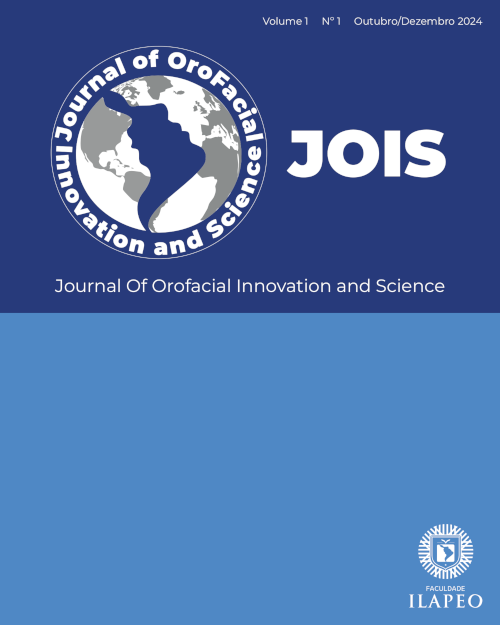Optimizing full arch rehabilitation with a digital workflow: case report
DOI:
https://doi.org/10.63281/jois.v1i1.3Keywords:
Rehabilitation, Dental implants, CAD-CAM, StereophotogrammetryAbstract
Infull arch rehabilitations,a detailed diagnosis is essential for guiding the selection of the most appropriate therapeutic approach. The complexity of these treatments requires meticulous and individualized planning. The aim of this report is to describea clinical case ofa patient with compromised dentition who was rehabilitated witha full-arch restoration usinga digital workflow.A 46-year-old male patient was referred for correction ofa partially edentulous maxillary arch. During the clinical examination, it was observed that the remaining dentition could not be utilized in the rehabilitation; therefore, it was decided to proceed with extractions and the placement ofsixdental implants inthe maxilla, with immediate loading. The workflow was digital, incorporating the fabrication of tooth-supported, mucosa-supported, and alveolar contour surgical guides, as well as the use of photogrammetry and CAD-CAM technology. After six months, it was possible to deliver the definitive FPl-type prosthesis made of monolithic zirconia. Since the delivery of the definitive prosthesis, the patient has been closely monitored and reports satisfaction with both the aesthetic and functional results. This case highlights the importance ofa thorough diagnosis in determining the appropriate rehabilitative approach forfull-arch cases. Digital workflows streamline treatment, enhance accuracy, and, when combined with personalized planning,
lead to optimized outcomes inimplant rehabilitation.



